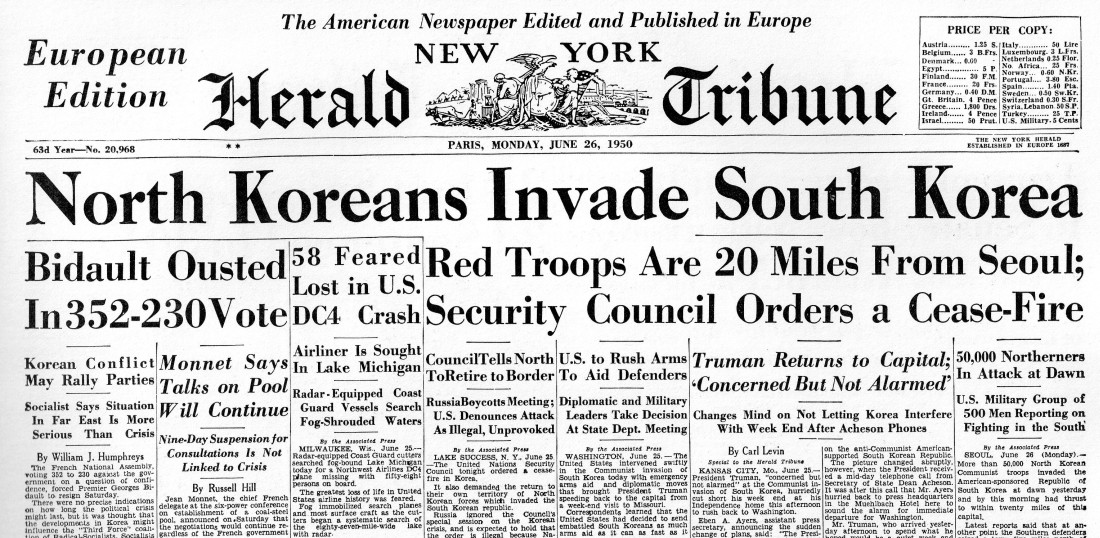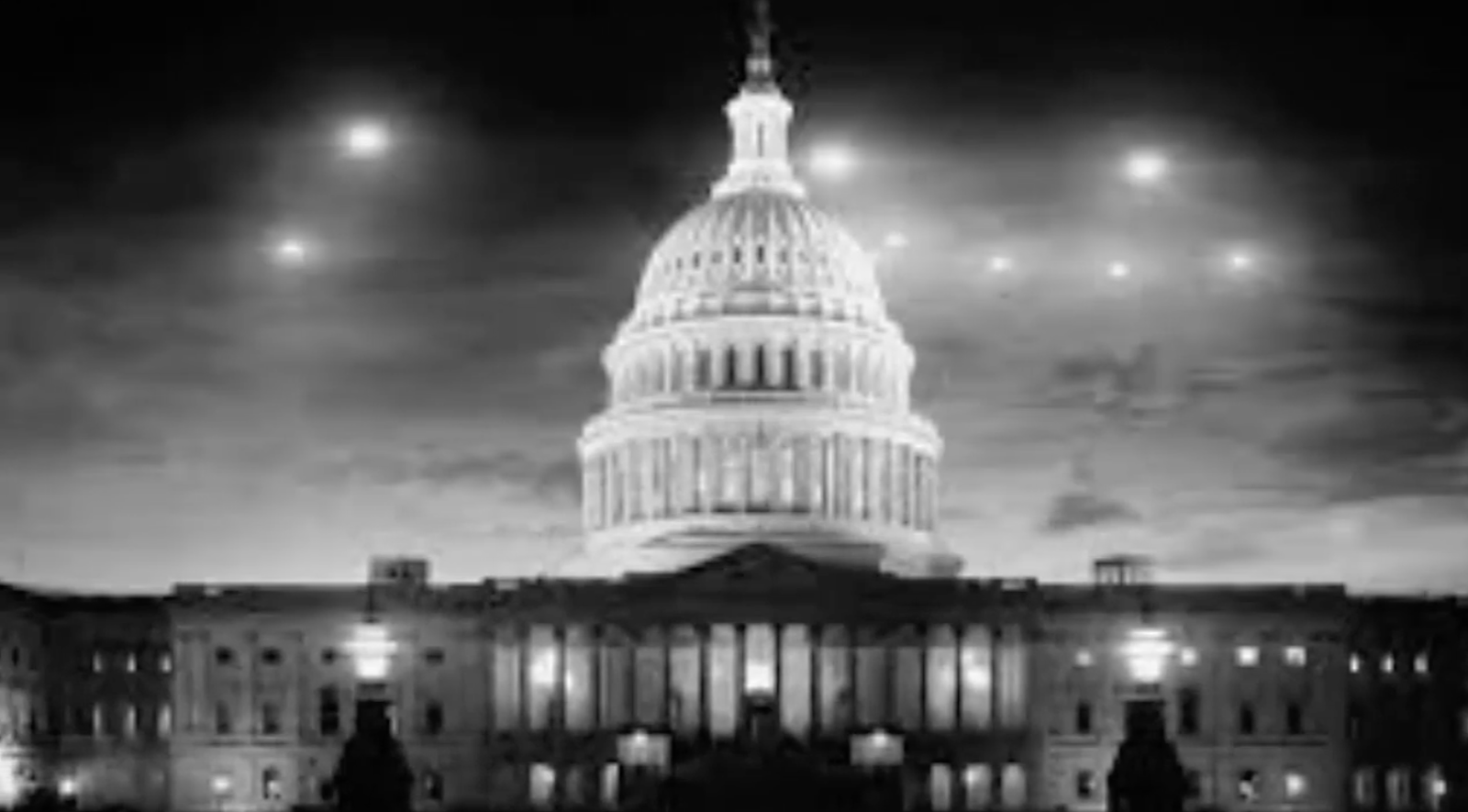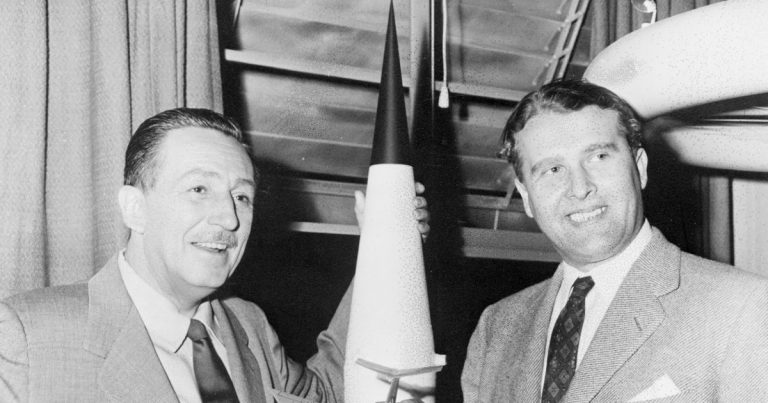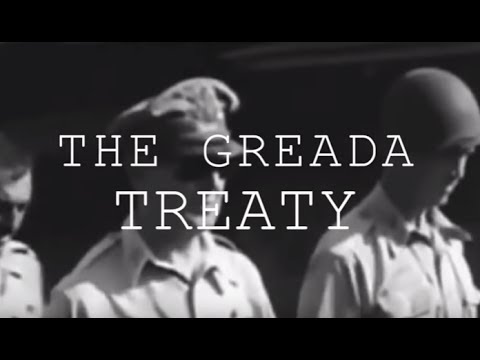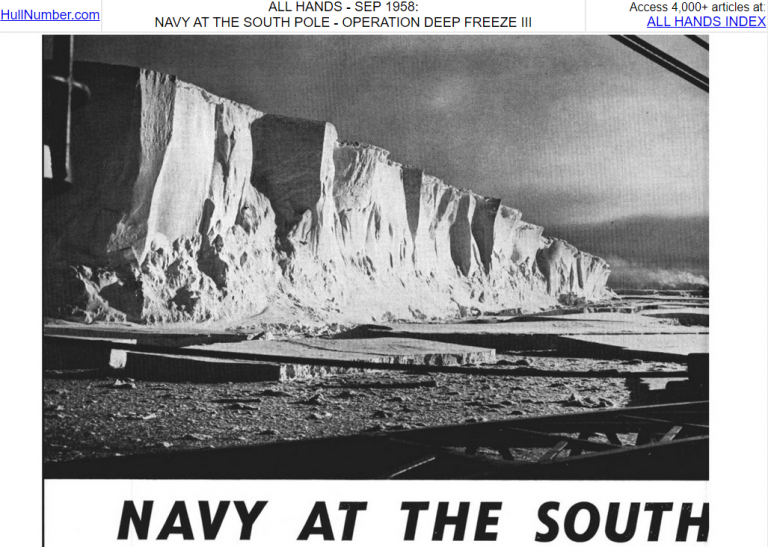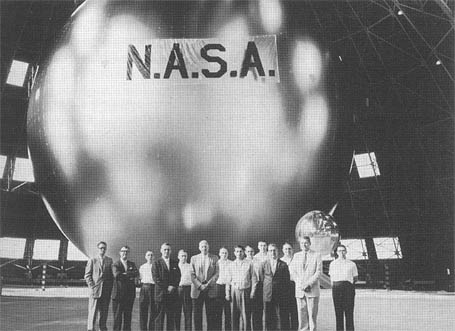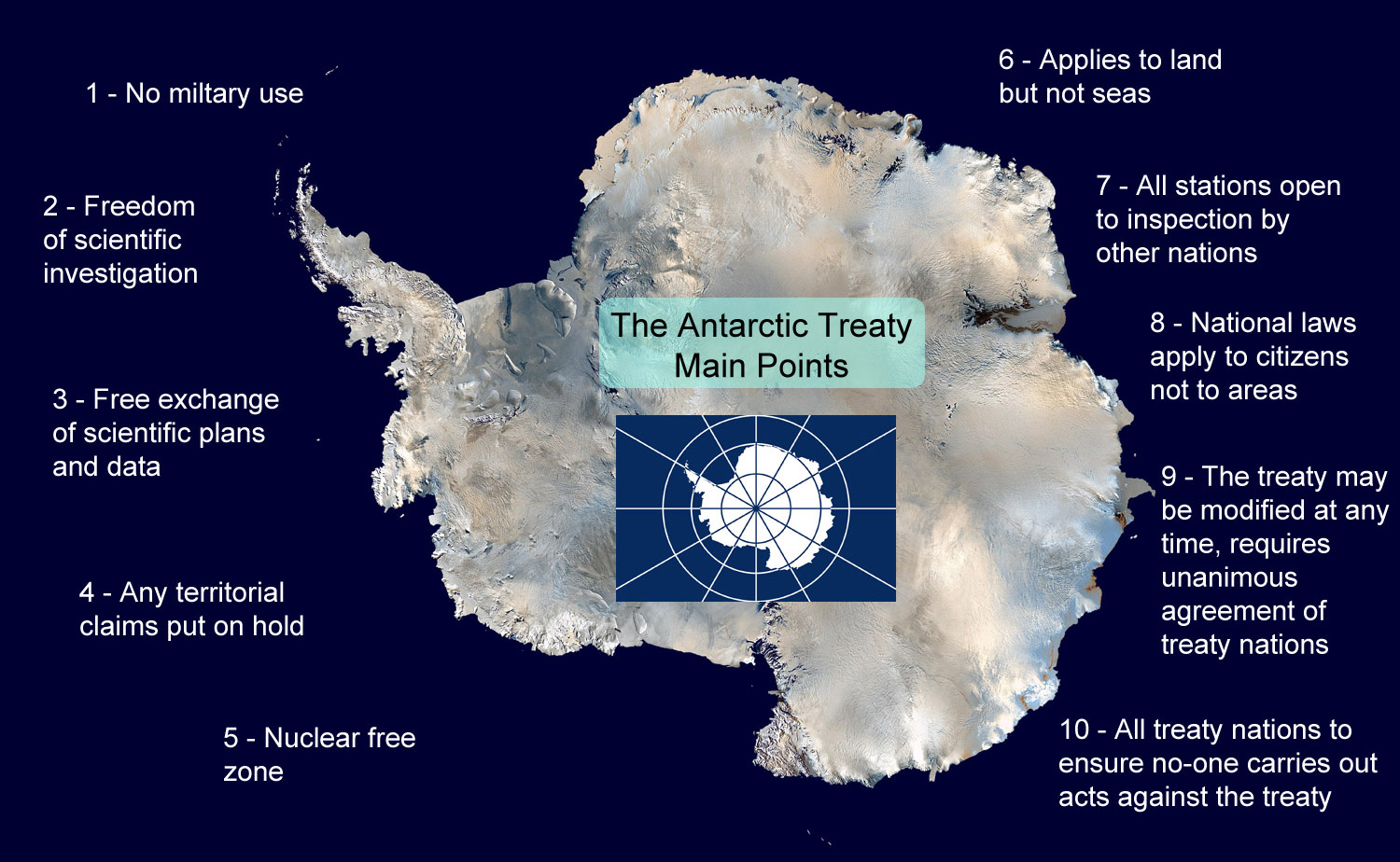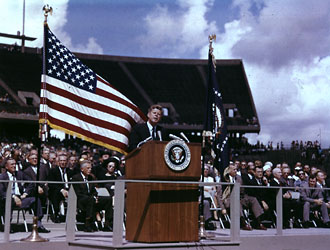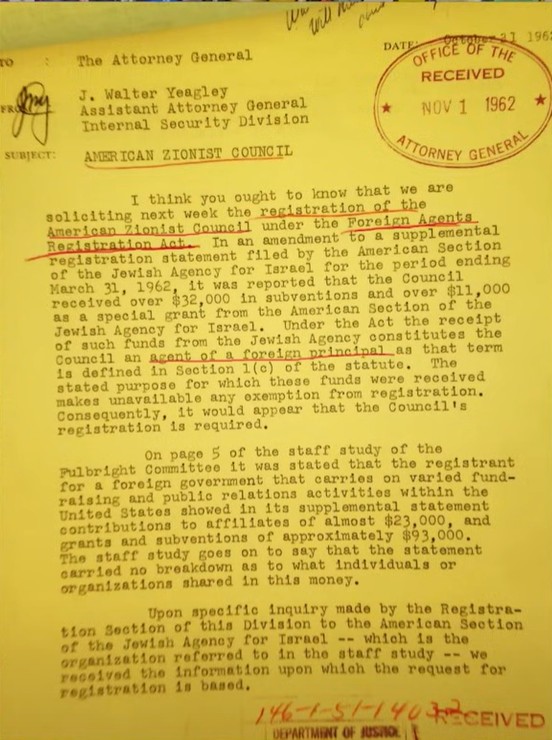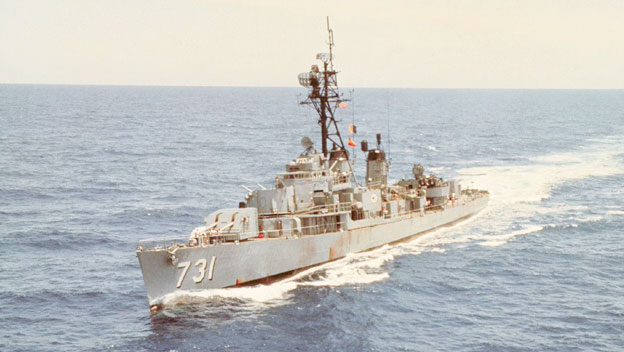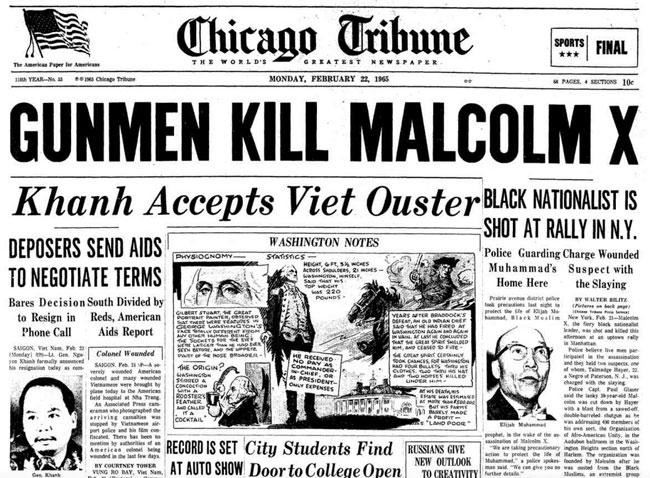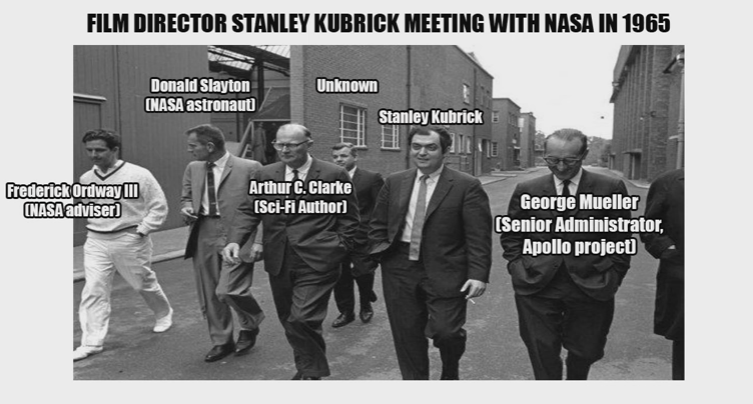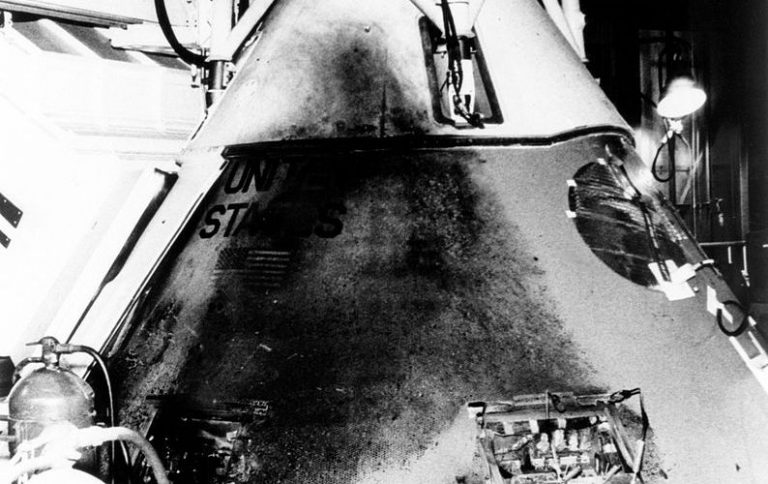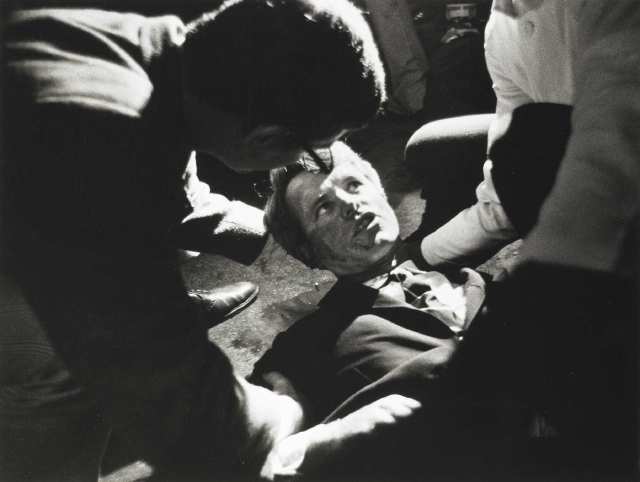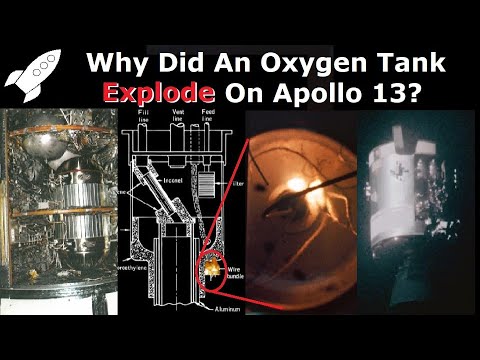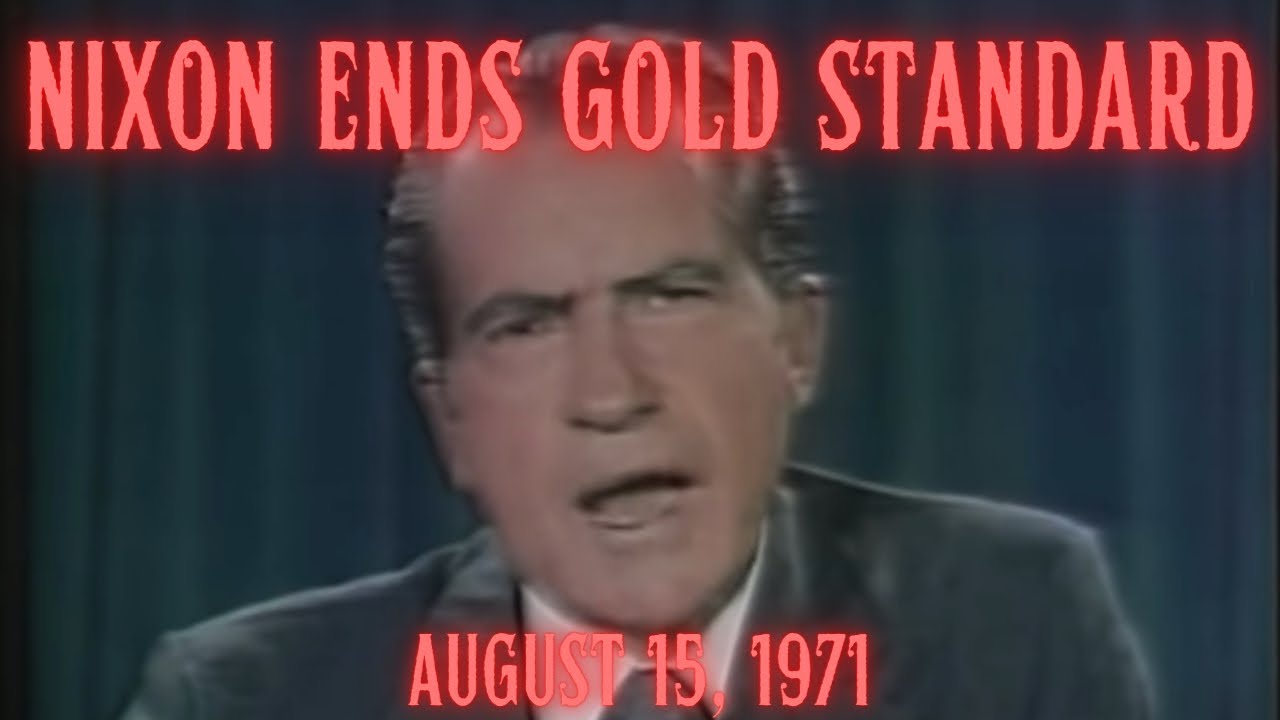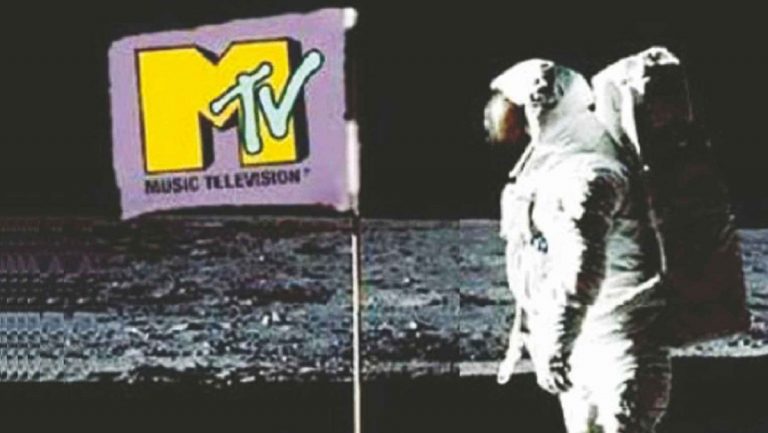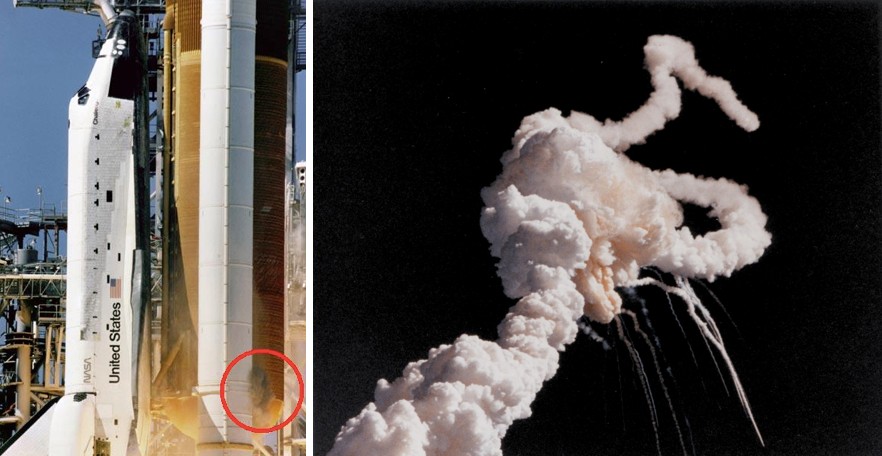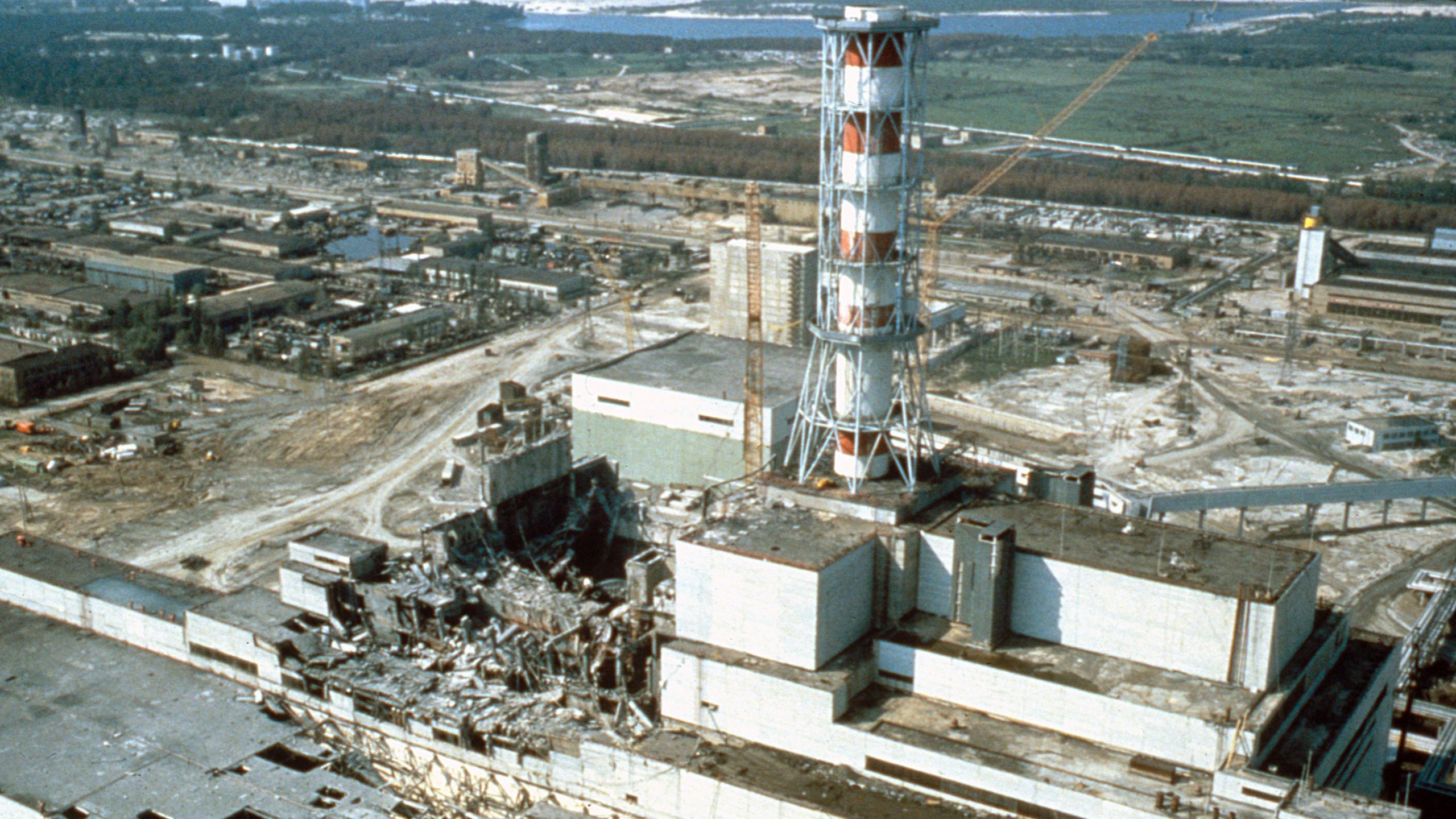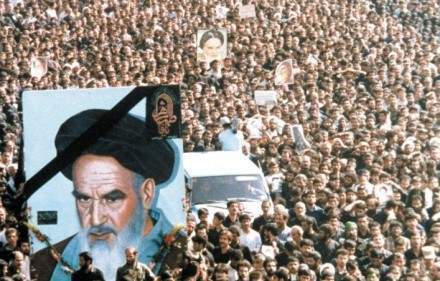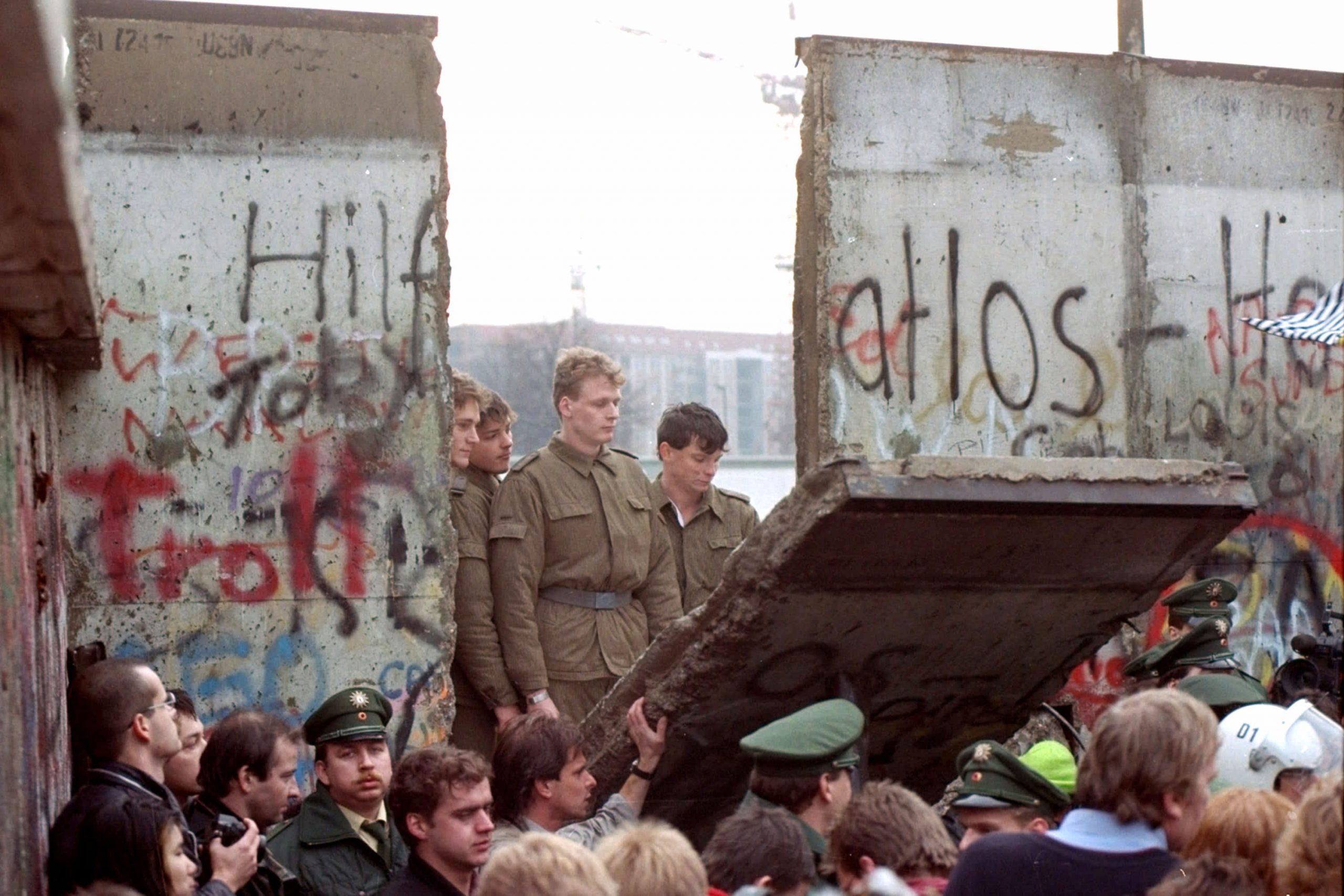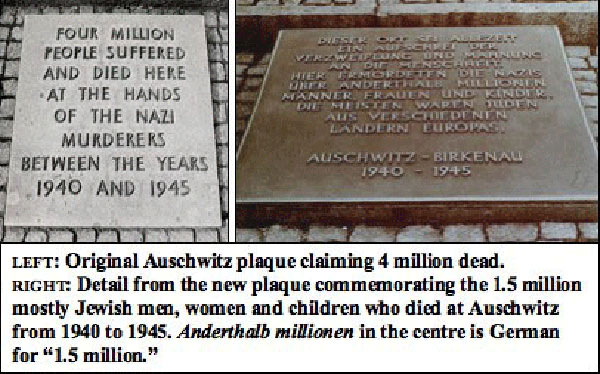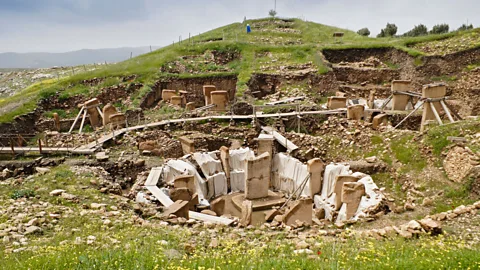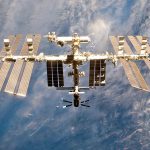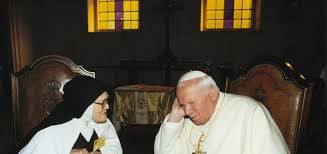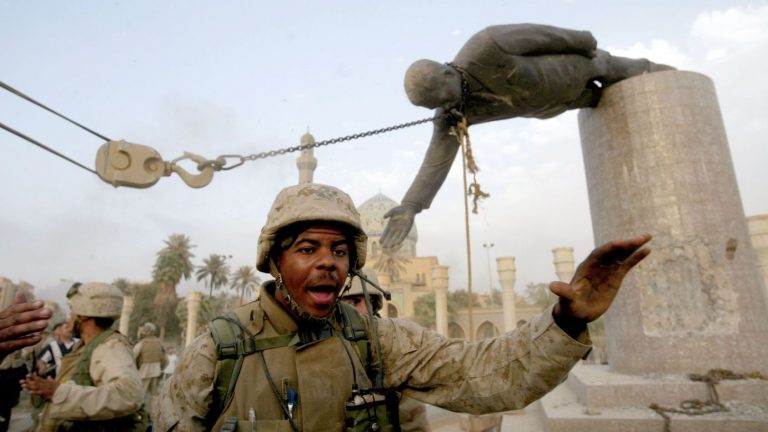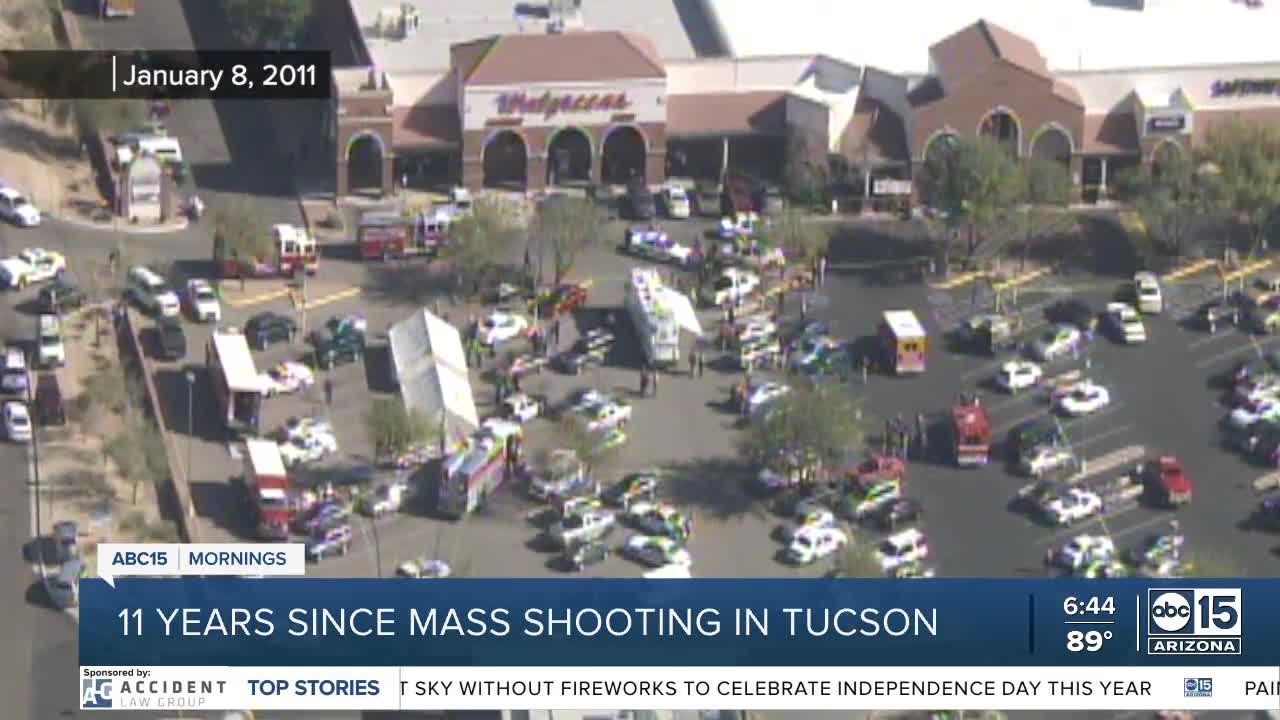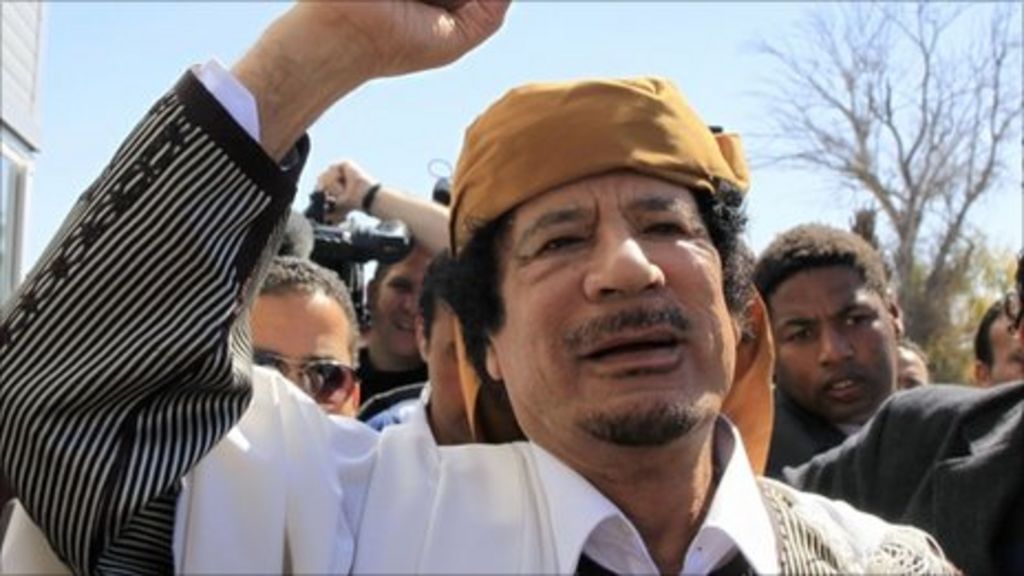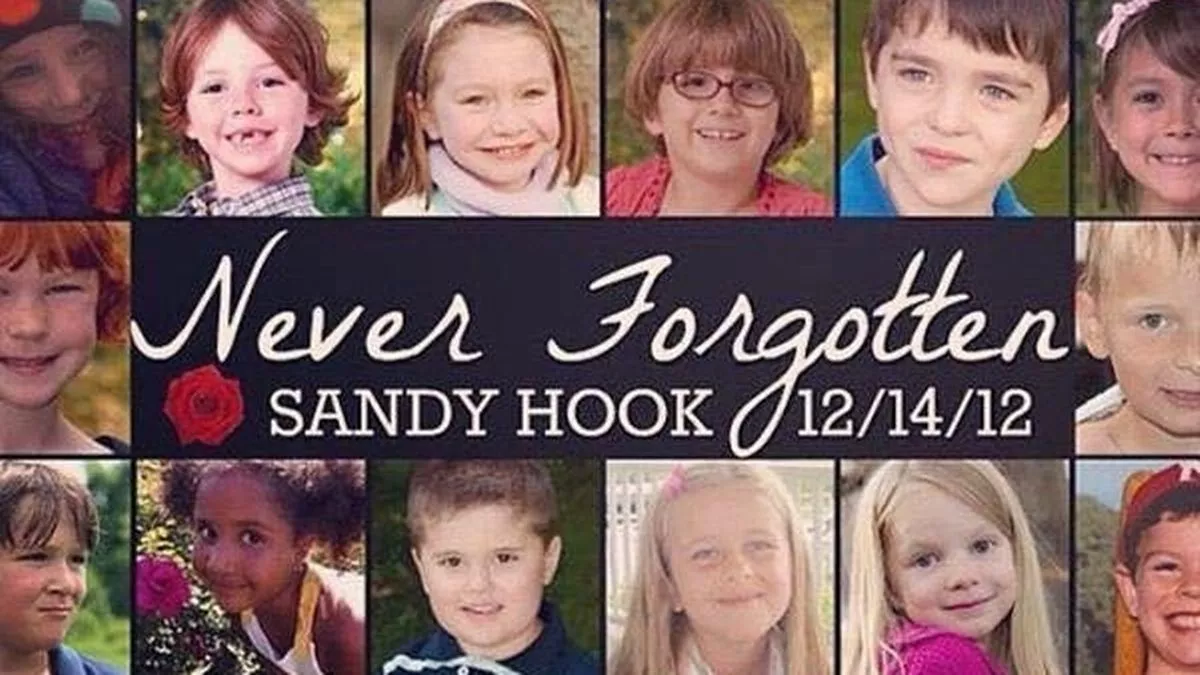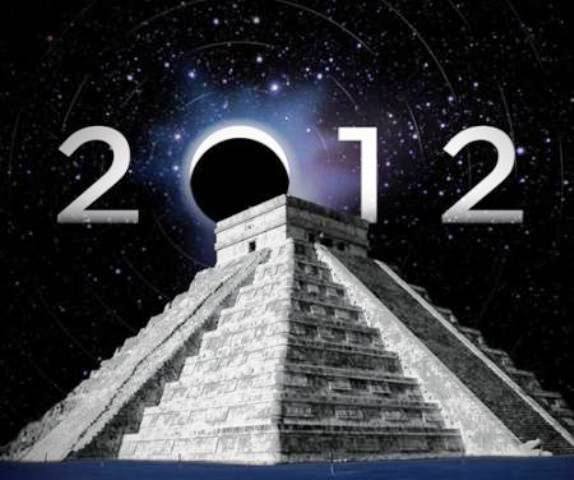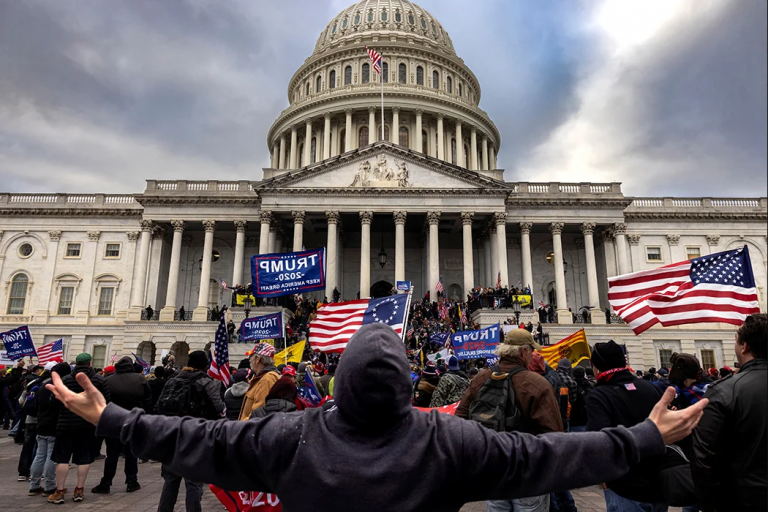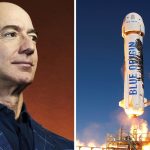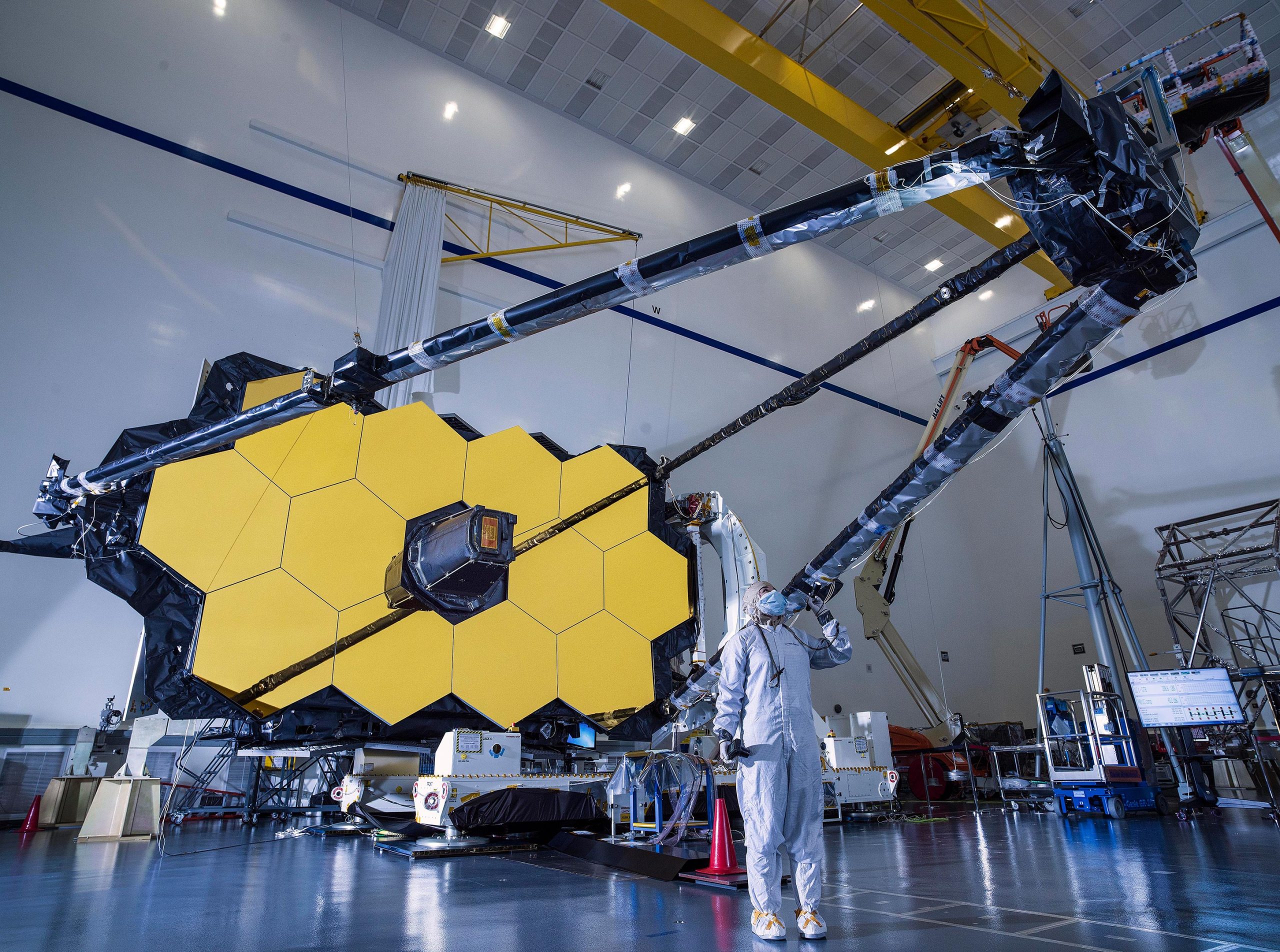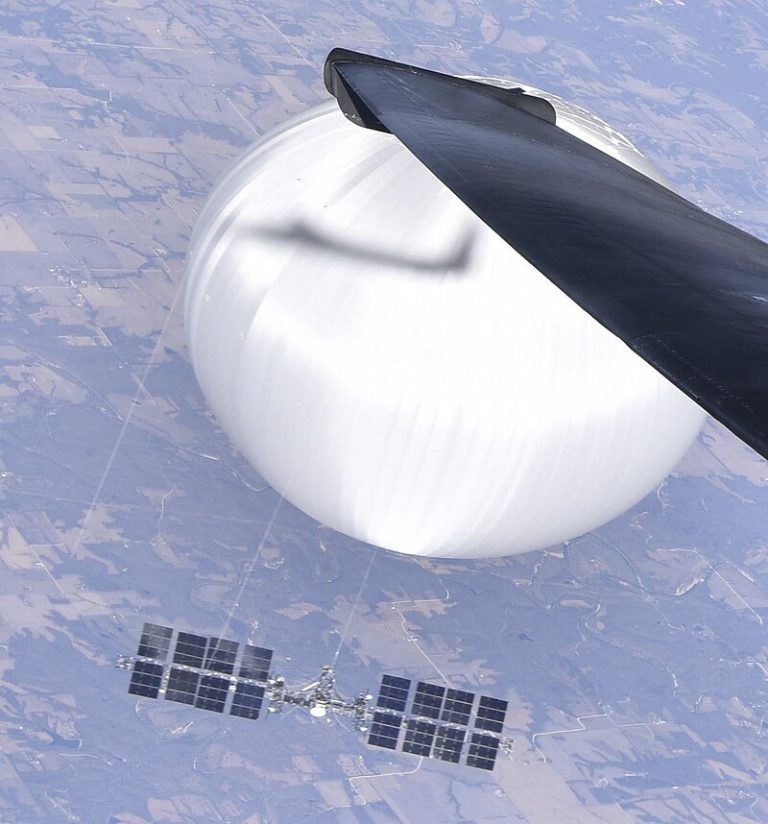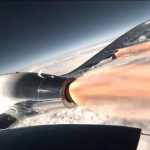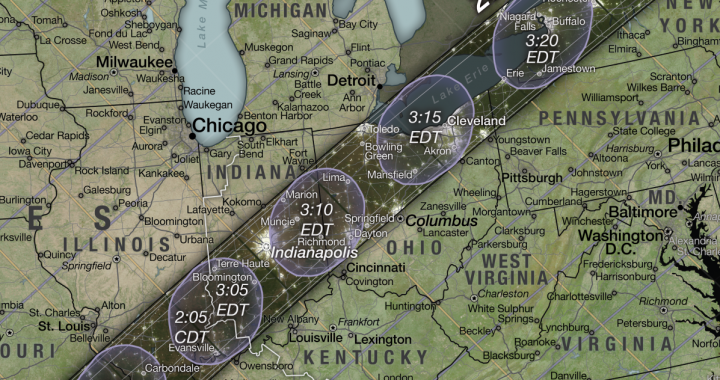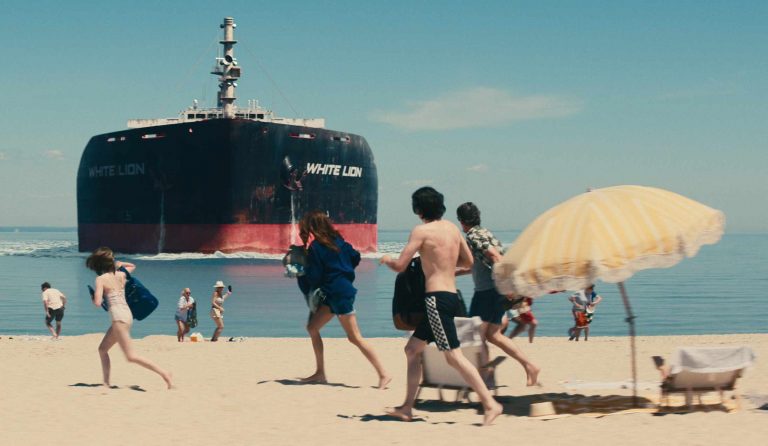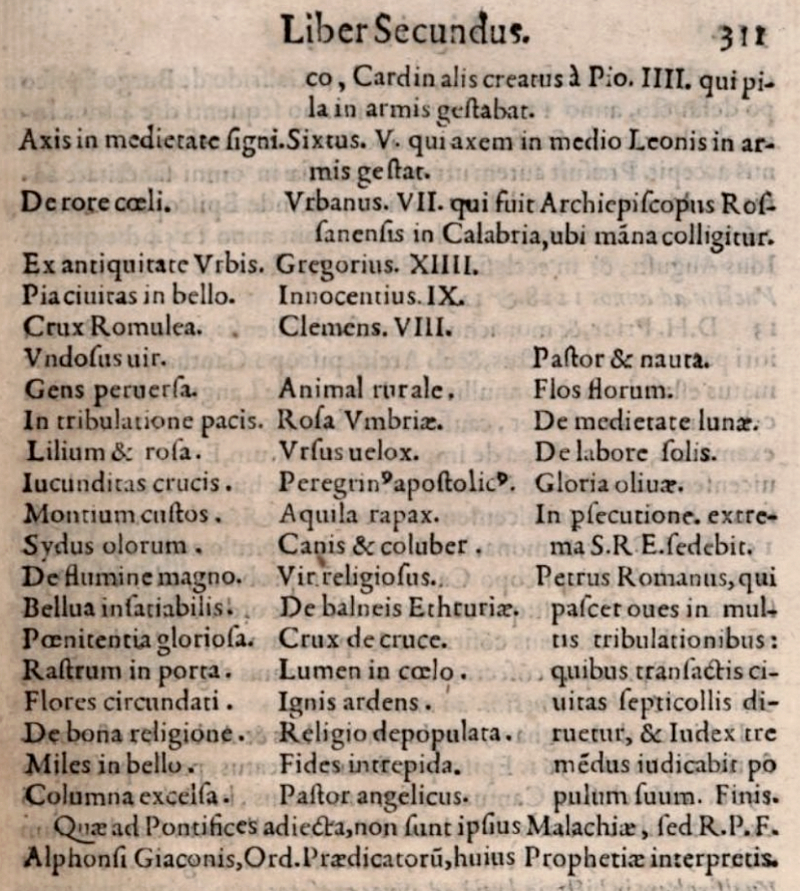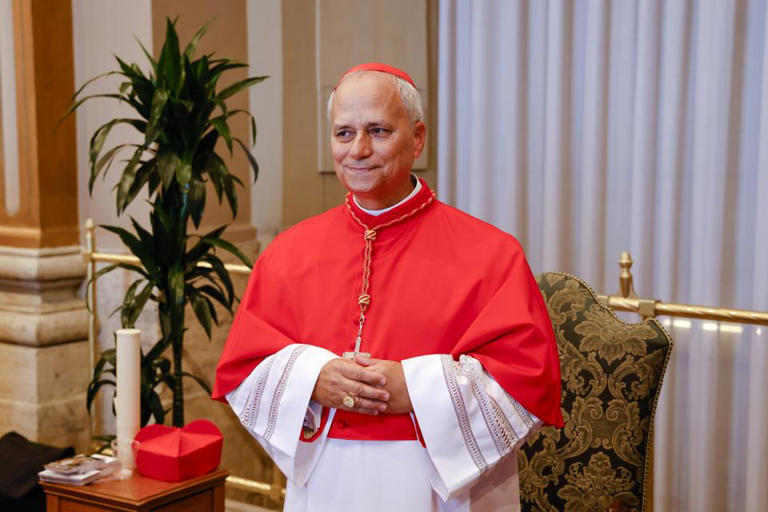TIMELINE 1945-2030
THE COLD WAR TO THE SINGULARITY
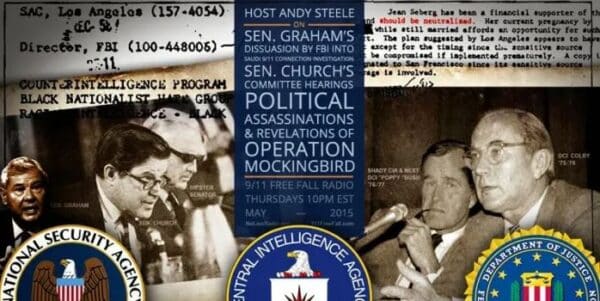
1945
CIA BEGINS OPERATION MOCKINGBIRD
Operation Mockingbird is the (not so secret) indoctrination of our minds to believe whatever the Media tells us to believe. This is an actual quote from the CIA director; William Casey.
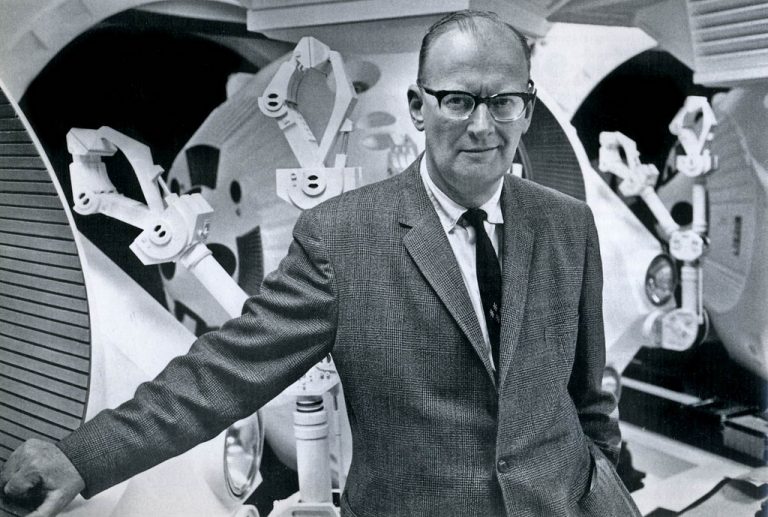
1945 May 25
ARTHUR C. CLARK INVENTS SATELLITES
Clarke followed up on this private paper with an article published in October 1945 in Wireless World titled, “Extra-Terrestrial Relays: Can Rocket Stations Give World-wide Radio Coverage?” The paper discusses how rocket technology, such as that used in German V-2s during the war, could be turned to peaceful ends by launching artificial satellites into orbit.

1945 November 20
NUREMBERG TRIALS BEGIN
The Nuremberg Trials were a series of military tribunals held from 1945 to 1946 in Nuremberg, Germany, where key leaders of Nazi Germany were prosecuted for war crimes, crimes against humanity, and crimes against peace. The trials aimed to hold individuals accountable for their actions during World War II and established important precedents in international law.

1946 August 26
OPERATION HIGH JUMP
Rear Admiral Richard Byrd led an expedition to the South Pole but suddenly canceled and went home. Byrd warned that the United States should adopt measures of protection against the possibility of an invasion of the country by hostile planes coming from the polar regions. But the cruel reality is that in case of a new war, the United States could be attacked by planes flying over one or both poles.

1946 October 1
NUREMBERG (SHOW) TRIALS FINISH
Nazi soldiers were put on trial for crimes against Humanity to prove the Holocaust happened. It was a disappointing trial with a foregone guilty conclusion despite the facts. Many of the Nazis were tortured to get confessions and the guards broke their prison windows in the winter so they would be in feezing cold conditions while they waited for their certain deaths. There families were also put in prison and treated the same way.
1946 November
DEAD SEA SCROLLS DISCOVERED
The Dead Sea Scrolls (also the Qumran Caves Scrolls) are ancient Jewish and Hebrew religious manuscripts first found in 1947 at the Qumran Caves near Ein Feshkha in the West Bank, on the northern shore of the Dead Sea. Dating back to between the 3rd century BCE and the 1st century They include the oldest surviving manuscripts of entire books later included in the bible.

1947 July 6
ROSWELL INCIDENT
Project Mogul sent high altitude balloons into the atmosphere to spy on the Soviet Union and became a big part of the early Cold War. This balloon was launched a couple of weeks before and landed on this date.
See Documentary

1947 September 18
CENTRAL INTELLIGENCE AGENCY SIGNED INTO LAW
The United States Central Intelligence Agency (CIA) was created on September 18, 1947, when Harry S. Truman signed the National Security Act of 1947 into law.
The first director of the Central Intelligence Agency (CIA) was Sidney Souers, who served from January 23, 1946, until June 10, 1946. The CIA was officially established later in 1947, and the first director of the CIA was Roscoe H. Hillenkoetter.

1947 October 14
SOUND BARRIER BROKEN
Chuck Yeager broke the sound barrier on October 14, 1947, while piloting the Bell X-1 aircraft. He reached a speed of Mach 1.05 at an altitude of 45,000 feet.
Fun Fact: they airbrushed ‘Glamorous Glennis from the X1 for the official photos.

1948 January 30
Mahatma Gandhi Assassinated
Mahatma Gandhi was assassinated on 30 January 1948 at age 78 in the compound of The Birla House (now Gandhi Smriti), a large mansion in central New Delhi. His assassin was Nathuram Godse, from Pune, Maharashtra, a Hindu nationalist,[1] with a history of association with the Rashtriya Swayamsevak Sangh (RSS), a right-wing Hindu paramilitary organization[2] and of membership of the Hindu Mahasabha.[3][4][5][6]
1948 May 14
STATE OF ISRAEL DECLARED
In 1948, following the 1947–1948 civil war in Mandatory Palestine, the Israeli Declaration of Independence sparked the 1948 Arab–Israeli War, which resulted in the 1948 Palestinian expulsion and flight from the land that the State of Israel came to control and subsequently led to waves of Jewish immigration from other parts of the Middle East.

1949
ALLEN DULLES RAN THE CIA FROM THE SHADOWS
In the 1948 Presidential election, Dulles was, together with his brother, an advisor to Republican nominee Thomas E. Dewey. The Dulles brothers and James Forrestal helped form the Office of Policy Coordination. During 1949 he co-authored the Dulles–Jackson–Correa Report, which was sharply critical of the Central Intelligence Agency, which had been established by the National Security Act of 1947. Partly as a result of the report, Truman named a new Director of Central Intelligence, Lieutenant General Walter Bedell Smith.[citation needed]
1950 June 27- 1953
KOREAN WAR STARTED
War between North and South Korea, 1950–1953
The Korean War was an armed conflict on the Korean Peninsula fought between North Korea and South Korea and their allies. North Korea was supported by China and the Soviet Union, while South Korea was supported by the United Nations Command led by the United States. The conflict was one of the first major proxy wars of the Cold War. Fighting ended in 1953 with an armistice but no peace treaty, leading to the ongoing Korean conflict. Wikipedia
1951
THE DAY THE EARTH STOOD STILL DEBUT
A timeless science fiction classic. In this 1951 film, an alien named Klaatu arrives on Earth with a powerful robot to deliver an urgent message to humanity. Set against the backdrop of Cold War paranoia, this movie explores themes of peace, fear, and the fate of the planet.
1952 July 12
UFO INCIDENT OVER WASHINGTON D.C.
From July 12 to 29, 1952, a series of unidentified flying object sightings were reported in Washington, D.C., and later became known as the Washington flap, the Washington National Airport Sightings, or the Invasion of Washington. The most publicized sightings took place on consecutive weekends, July 19–20 and July 26–27. UFO historian Curtis Peebles called the incident “the climax of the 1952 flap”—”Never before or after did Project Blue Book and the Air Force undergo such a tidal wave of reports. Wikipedia

1954 April 26
POLIO CLINICAL TRIALS ON CHILDREN
On April 26, 1954, the Salk polio vaccine field trials, involving 1.8 million children, begin at the Franklin Sherman Elementary School in McLean, Virginia. Children in the United States, Canada and Finland participated in the trials, which used for the first time the now-standard double-blind method, whereby neither the patient nor attending doctor knew if the inoculation was the vaccine or a placebo.
1954
GREADA TREATY BETWEEN ALIENS AND HUMANS
The Greada Treaty is a widely discussed but unverified conspiracy theory suggesting that U.S. President Dwight D. Eisenhower allegedly signed a secret agreement with extraterrestrial beings—specifically the Grey aliens—in 1954. According to the theory, the treaty supposedly allowed the Greys to abduct a limited number of humans for experimentation in exchange for advanced technology. Some versions of the story claim that another alien race, often referred to as Nordics, warned Eisenhower against making the deal but were ignored.

1955 April 26
POLIO ANNOUNCED AS SAFE
One year later, on April 12, 1955, researchers announced the vaccine was safe and effective and it quickly became a standard part of childhood immunizations in America. In the ensuing decades, polio vaccines would all but wipe out the highly contagious disease in the Western Hemisphere.

1955
POLIO VACCINATION MANDATORY
The Polio Vax was mandatory in 1955 and a huge rollout began.

1955
“CUTTER INCIDENT” FAULTY VACCINE FROM UNREGULATED LAB
4 Million doses were produced but many new cases of Polio were reported. Cutter Lab was found to have produced harmful vaccines and all shots were stopped. In May of 1955, Surgeon General Leonard Sheele suspended the program. By this time, over 400,000 children had already been given the faulty doses and of those, 250 developed Polio and it was spread to as many as 220,000 other people.
In April 1955 more than 200 000 children in five Western and mid-Western USA states received a polio vaccine in which the process of inactivating the live virus proved to be defective. Within days there were reports of paralysis and within a month the first mass vaccination programme against polio had to be abandoned. Subsequent investigations revealed that the vaccine, manufactured by the California-based family firm of Cutter Laboratories, had caused 40 000 cases of polio, leaving 200 children with varying degrees of paralysis and killing 10.
1955
OPERATION DEEP FREEZE
Admiral Byrd talks about the Antarctic as a huge continent larger than the USA with amazing resources to be explored. (Note the Map of the Earth is set up like a Flat Earth Map.). Establishment of U.S. Miliary based in the Antarctic? Or the Study of the firmament dome and Worlds discovered by Richard Byrd?

1957 October 4
SPUTNIK LAUNCHED BY SOVIET UNION
The Soviet Union was said to have launched Sputnik on this date but did it really circle the Earth? If the Earth is not a ball, then it was faked too. Yes?

1958- 1962
CHAIRMAN MAO KILLS 45 MILLION: GREAT LEAP FORWARD
Period of widespread famine in the People’s Republic of China between the years 1959 and 1961 during the Great Leap Forward
The Great Chinese Famine was a famine that occurred between 1959 and 1961 in the People’s Republic of China. Some scholars have also included the years 1958 or 1962. It is widely regarded as the deadliest famine and one of the greatest man-made disasters in human history, with an estimated death toll due to starvation that ranges in the tens of millions. The most stricken provinces were Anhui, Chongqing, Sichuan, Guizhou and Hunan. Wikipedia

1958
NASA CREATED
President Eisenhower brings Verner Von Braun and Walt Disney together to create the Space Agency.
NASA was created as a psyop to take the attention off Admiral Byrd’s explorations of the Antarctic. Officially started to work on PROJECT ECHO.

1958
OPERATION FISHBOWL
The USA and Soviet Union started shooting high yield Nuclear missiles at the dome after they went the highest altitude they had ever gone and saw that the Earth is flat.
1959 December 1
ANTARCTIC TREATY SIGNED
The Antarctic Treaty was signed in Washington on 1 December 1959 by the twelve countries whose scientists had been active in and around Antarctica during the International Geophysical Year (IGY) of 1957-58. It entered into force in 1961 and has since been acceded to by many other nations. The total number of Parties to the Treaty is now 54.
Established to Forbid private exploration of the Antarctic or to travel beyond the 60th parallel at risk of death or imprisonment. The Logo of the United Nations is the map of the Flat Earth.

1961 April
BAY OF PIGS FAILED INVASION OF CUBA
Failed landing operation of Cuba in 1961
The Bay of Pigs Invasion was a failed military landing operation on the southwestern coast of Cuba in April 1961 by the United States of America and the Cuban Democratic Revolutionary Front, consisting of Cuban exiles who opposed Fidel Castro’s Cuban Revolution, clandestinely and directly financed by the U.S. government. The operation took place at the height of the Cold War, and its failure influenced relations between Cuba, the United States, and the Soviet Union. Wikipedia

1961
ALLEN DULLES FIRED FROM CIA BY PRESIDENT KENNEDY
Kennedy fired Allen Dulles after the Bay of Pigs fiasco. Dulles stayed in Washington and ran the CIA from the shadows: Read: THE DEVIL’S CHESSBOARD

1962
OPERATION NORTHWOODS
Operation Northwoods was a proposed false flag operation that originated within the US Department of Defense of the United States government in 1962. The proposals called for CIA operatives to both stage and commit acts of terrorism against American military and civilian targets, blame them on the Cuban government, and use them to justify a war against Cuba. Wikipedia
1962 September 12
JFK SPEECH: WE CHOOSE TO GO TO THE MOON
The Voice of the Silence is a book by Helena Petrovna Blavatsky. It was written in Fontainebleau and first published in 1889. According to Blavatsky, it is a translation of fragments from a sacred book she encountered during her studies in the East, called “The Book of the Golden Precepts”

1962, October
CUBAN MISSLE CRISIS
The Cuban Missile Crisis, also known as the October Crisis in Cuba, or the Caribbean Crisis, was a 13-day confrontation between the governments of the United States and the Soviet Union, when American deployments of nuclear missiles in Italy and Turkey were matched by Soviet deployments of nuclear missiles in Cuba. The crisis lasted from 16 to 28 October 1962. The confrontation is widely considered the closest the Cold War came to escalating into full-scale nuclear war. Wikipedia
1963 June 26
JFK SPEECH: I AM A BERLINNER
“Ich bin ein Berliner” is a speech by United States President John F. Kennedy given on June 26, 1963, in West Berlin. It is one of the best-known speeches of the Cold War and among the most famous anti-communist speeches. Twenty-two months earlier, East Germany had erected the Berlin Wall to prevent mass emigration to West Berlin. The speech was aimed as much at the Soviet Union as it was at West Berliners. Wikipedia
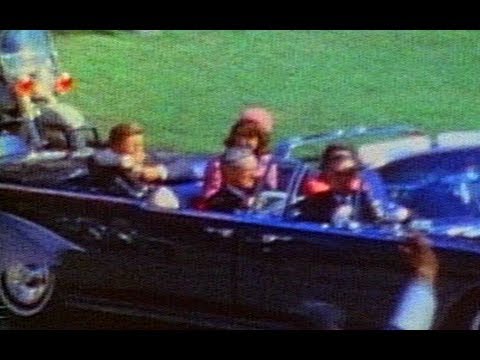
1963 November 22
JFK ASSASSINATED IN DALLAS TEXAS
The official Story was that Lee Harvey Oswald killed Kennedy from the Book Depository Building.
Since that day it has been determined that there had to be more than one gunman and it is very unlikely that Oswald shot Kennedy or at very least that he was a lone gunman.

1964
ALLEN DULLES HEADS THE WARREN COMMISSION
Dulles hated Kennedy and felt humiliated that Kennedy fired him in 1961. He was appointed head of the Warren Comission. (What could possibly go wrong)
1964 August 2
GULF OF TONKIN INCIDENT; FALSE FLAG ATTACK THAT TRIGGERED THE U.S. TO RAMP UP THE VIETNAM WAR
President Johnson lied about an attack on a U.S. ship so he could move ahead with the Vietnam War. In what is known as the Gulf of Tonkin Incident, the American government claimed that Vietnamese patrol boats fired on the U.S. destroyer Maddox on two separate occasions in early August 1964 in the waters of the Gulf of Tonkin.The President seized the opportunity to get authorization from Congress to massively increase spending and troops for the Vietnam War for a program called ‘Rolling Thunder’. Years later, Secretary of State; Robert Mcnamara admitted the incident never happened
Video shows Johnson made up the story

1964 August 7
GULF OF TONKIN RESOLUTION STARTS VIETNAM WAR
President Johnson tells congress they were attacked by North Vietnam and gets a vote to upgrade the funding with ROLLING THUNDER to escalate the War.
Robert McNamara admitted later that the attack never happened. Johnson later said he figured it didn’t happen anyway. He said: I bet it was a whale. Millions of lives were ended because of a lie.
1965 February 21
MALCOLM X ASSASSINATED
Killing on February 21, 1965
Malcolm X, an African American Muslim minister and human rights activist who was a popular figure during the civil rights movement, was shot multiple times and died from his wounds in Manhattan, New York City, on February 21, 1965, at the age of 39 while preparing to address the Organization of Afro-American Unity at the Audubon Ballroom in the neighborhood of Washington Heights. Three members of the Nation of Islam—Muhammad Abdul Aziz, Khalil Islam, and Thomas Hagan—were charged, tried, and convicted of the murder and given indeterminate life sentences, but in November 2021, Aziz and Islam were exonerated. Wikipedia
1967 January 27
APOLLO 1 ASTRONAUTS DIE IN FIRE
The launch rehearsal on January 27, 1967, was a “plugs-out” test. Just before that test, Gus Grissom had declared the ship a lemon and even hung a lemon on the spacecraft saying: how can we communicate in space when we can’t even communicate between buildings. I think they were killed because they wouldn’t be part of the hoax.
APOLLO 1 CONSPIRACY
1967 June 5
6 DAY WAR WITH ISRAEL
The Six-Day War, fought from June 5 to June 10, 1967, was a conflict between Israel and a coalition of Arab states, primarily Egypt, Syria, and Jordan. Israel launched a preemptive strike, resulting in significant territorial gains, including the Golan Heights, West Bank, and Gaza Strip, and establishing its military dominance in the region.
 Wikipedia
Wikipedia Encyclopedia Britannica
Encyclopedia Britannica

1967 June 8
USS LIBERTY ATTACKED BY ISRAEL TO BRING THE U.S. INTO THE 6 DAY WAR WITH ISRAEL
Israel attacked this US ship. They tried to sink the ship and wanted to blame it on Israel. But the ship wouldn’t sink. The crew was threatened with prison or worse if they told what happened. Johnson calluded with Israel to try to drag the U.S. into the war but they failed to sink the ship.
1968 April 4
MARTIN LUTHER KING ASSASSINATION
1968 murder of Martin Luther King Jr.
Martin Luther King Jr., an American civil rights activist, was fatally shot at the Lorraine Motel in Memphis, Tennessee, on April 4, 1968, at 6:01 p.m. CST. He was rushed to St. Joseph’s Hospital, where he was pronounced dead at 7:05 p.m at age 39. King was a prominent leader of the civil rights movement and a Nobel Peace Prize laureate who was known for his use of nonviolence and civil disobedience. Wikipedia
1968 June 5
ROBERT F KENNEDY ASSASSINATION
RFK and the families of other people killed that day have spoken out for the release of the Assassin saying he was framed. They can prove RFK was killed by his own Secret Service Agents.
On June 5, 1968, Robert F. Kennedy was shot by Sirhan Sirhan at the Ambassador Hotel in Los Angeles, California, and pronounced dead the following day. Kennedy, a United States senator and candidate in the 1968 Democratic Party presidential primaries, won the California and South Dakota primaries on June 4. He addressed his campaign supporters in the Ambassador Hotel’s Embassy Ballroom. Wikipedia
VIDEO: RFK SAYS IT WASN’T SURHAN.2025.05.07

1968
ARTHUR C. CLARK PUBLISHES ‘2001 A SPACE ODESSY’
Arthur C. Clark wrote 2001 while Stanley Kubrick started work on the Movie version. 2001-1968= 33 years.

1969 July 20
ARMSTRONG AND ALDRIN WALK ON MOON
CLICK ON THIS PHOTO TO SEE A SECOND PERSON IN THE FRAME. OOPS.
Televised live coverage of Apollo 11 astronauts stepping onto the Moon’s surface. News outlets were not allowed to tie into the NASA feed. They had to film it from a projection screen at NASA headquarters.
Neil Armstrong was the first man to walk on the Moon on July 21, 1969, during the Apollo 11 mission. He famously declared, “That’s one small step for [a] man, one giant leap for mankind” as he stepped onto the lunar surface.
 Sky HISTORY TV Channel
Sky HISTORY TV Channel Wikipedia
Wikipedia
Theory, especially during the 1970s, of imminent cooling of the Earth
Global cooling was a conjecture, especially during the 1970s, of imminent cooling of the Earth culminating in a period of extensive glaciation, due to the cooling effects of aerosols or orbital forcing. Some press reports in the 1970s speculated about continued cooling; these did not accurately reflect the scientific literature of the time, which was generally more concerned with warming from an enhanced greenhouse effect. Wikipedia
1971
PENTAGON PAPERS
The Pentagon Papers, leaked in 1971 by Daniel Ellsberg, were incredibly damaging to the U.S. government because they exposed years of deception about the Vietnam War. The report, officially titled United States – Vietnam Relations, 1945–1967: A Study Prepared by the Department of Defense, revealed that multiple administrations had misled the public about the war’s progress, its motives, and the likelihood of success.
1971 August 15
NIXON TAKES US OFF GOLD STANDARD
The Nixon shock was the effect of a series of economic measures, including wage and price freezes, surcharges on imports, and the unilateral cancellation of the direct international convertibility of the United States dollar to gold, taken by United States president Richard Nixon on 15 August 1971 in response to increasing inflation. Although Nixon’s actions did not formally abolish the existing Bretton Woods system of international financial exchange, the suspension of one of its key components effectively rendered the Bretton Woods system inoperative. Wikipedia
1972 June 17
WATERGATE BREAK IN
The Watergate break-in occurred on June 17, 1972, when five men associated with President Nixon’s re-election campaign broke into the Democratic National Committee headquarters at the Watergate complex in Washington, D.C. This event led to a major political scandal involving a cover-up by Nixon’s administration and ultimately resulted in Nixon’s resignation in 1974.
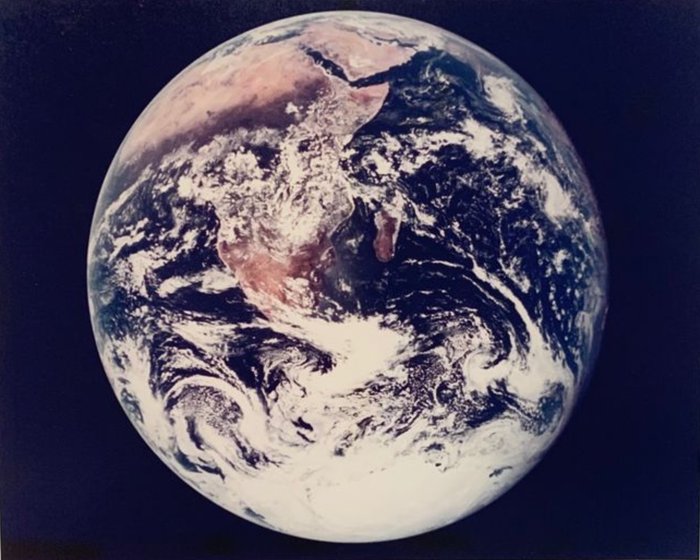
1972 December 7
BLUE MARBLE: FIRST PHOTO TAKEN OF EARTH
The Blue Marble is a famous photograph of Earth taken on December 7, 1972, by the Apollo 17 crew during their mission to the Moon. It is one of the most widely distributed images in history, showcasing the planet as a beautiful blue orb in the vastness of space, and has become a symbol of environmental awareness and unity.
 NASA
NASA Wikipedia
Wikipedia
1974 August 8
NIXON RESIGNS OVER WATERGATE SCANDAL
On August 8, 1974, President Richard Nixon announced his resignation from the presidency due to the Watergate scandal, becoming the first U.S. president to do so. He cited a loss of support in Congress and the need for national healing as reasons for his decision, officially resigning the following day.
1975
CHURCH COMMITTEE FINDS: MK ULTRA, OPERATION MOCKINGBIRD
The Church Committee (formally the United States Senate Select Committee to Study Governmental Operations with Respect to Intelligence Activities) was a US Senate select committee in 1975 that investigated abuses by the Central Intelligence Agency (CIA), National Security Agency (NSA), Federal Bureau of Investigation (FBI), and the Internal Revenue Service (IRS). Chaired by Idaho Senator Frank Church (D–ID), the committee was part of a series of investigations into intelligence abuses in 1975, dubbed the “Year of Intelligence”, including its House counterpart, the Pike Committee, and the presidential Rockefeller Commission. The committee’s efforts led to the establishment of the permanent US Senate Select Committee on Intelligence.

1977 September 5
VOYAGER 1 LAUNCHED INTO SPACE
First spacecraft to reach interstellar space. It contains a golden record to show earth to aliens. The Voyager Golden Record contains 116 images and a variety of sounds. The items for the record, which is carried on both the Voyager 1 and Voyager 2 spacecraft, were selected for NASA by a committee chaired by Carl Sagan of Cornell University. Wikipedia
The Move: “CONTACT” (1997) and “STAR TREK: THE MOTION PICTURE” (1979)
1977
CAPRICORN ONE: MOVIE
Capricorn One is a 1977 British-produced American thriller film in which a reporter discovers that a supposed Mars landing by a crewed mission to the planet has been faked via a conspiracy involving the government and—under duress—the crew themselves. It was written and directed by Peter Hyams
WATCH MOVIE
1978 September 28
POPE JOHN PAUL I DIES AFTER ONLY 33 DAYS
Pope John Paul I was elected in 1978 as the first to call himself “the first” pope. He died 33 days later, allegedly of a heart attack, but many suspect foul play or a coverup. Learn about his life, his reforms, and the conspiracy theories surrounding his death.
1980March 22
GEORGIA GUIDESTONES
Erected anonymously. The centre stone has an eye-level, oblique hole drilled so that the North Star is always visible alongside a slot which is always aligned with the Sun’s solstices and equinoxes. Meanwhile, the four large upright wing slabs are oriented to the limits of moon migration during the year.
1980 December 8
JOHN LENNON KILLED IN NEW YORK
John Lennon was shot and killed on December 8, 1980, outside his apartment building, the Dakota, in New York City. The perpetrator, Mark David Chapman, was a fan who had become disillusioned with Lennon and was sentenced to 20 years to life in prison for the murder.
 Sky HISTORY TV Channel
Sky HISTORY TV Channel Wikipedia
Wikipedia

1981 – 1987
CASEY: DIRECTOR CIA
The United States Central Intelligence Agency (CIA) was created on September 18, 1947, when Harry S. Truman signed the National Security Act of 1947 into law.
William Joseph Casey was an American lawyer who was the Director of Central Intelligence from 1981 to 1987. In this capacity he oversaw the entire United States Intelligence Community and personally directed the Central Intelligence Agency. Wikipedia
1981 March 30
RONALD REAGAN SHOT BY jOHN HINKLEY JR.
On March 30, 1981, Ronald Reagan, the President of the United States, was shot and wounded by John Hinckley Jr. in Washington, D.C., as Reagan was returning to his limousine after a speaking engagement at the Washington Hilton hotel. Hinckley believed the attack would impress the actress
1981 April 14
FIRST LAUNCH OF SPACE SHUTTLE
STS-1 (Space Transportation System-1) was the first orbital spaceflight of NASA‘s Space Shuttle program. The first orbiter, Columbia, launched on April 12, 1981,[1] and returned on April 14, 1981, 54.5 hours later, having orbited the Earth 37 times. Columbia carried a crew of two—commander John W. Young and pilot Robert L. Crippen. It was the first American crewed space flight since the Apollo–Soyuz Test Project (ASTP) in 1975. STS-1 was also the maiden test flight of a new American spacecraft to carry a crew, though it was preceded by atmospheric testing (ALT) of the orbiter and ground testing of the Space Shuttle system.
The launch occurred on the 20th anniversary of Vostok 1, the first human spaceflight, performed by Yuri Gagarin for the USSR. This was a coincidence rather than a celebration of the anniversary; a technical problem had prevented STS-1 from launching two days earlier, as was planned.
1986 January 28
CHALLENGER DISASTER
The Space Shuttle Challenger disaster was a fatal accident in the United States’ space program that occurred on January 28, 1986, when the Space Shuttle Challenger (OV-099) broke apart 73 seconds into its flight, killing all seven crew members aboard.
1986 February
HALLEY’S COMET PASSED BY EARTH
The 1986 apparition of Halley’s Comet was the least favourable on record. In February 1986, the comet and the Earth were on opposite sides of the Sun, creating the worst possible viewing circumstances for Earth observers during the previous 2,000 years.[144] Halley’s closest approach was 0.42 au.[145] Additionally, increased light pollution from urbanisation caused many people to fail in attempts to see the comet. With the help of binoculars, observation from areas outside cities was more successful.[146] Further, the comet appeared brightest when it was almost invisible from the northern hemisphere in March and April 1986,[147] with best opportunities occurring when the comet could be sighted close to the horizon at dawn and dusk, if not obscured by clouds.
The approach of the comet was first detected by astronomers David C. Jewitt and G. Edward Danielson on 16 October 1982 using the 5.1 m Hale Telescope at Mount Palomar and a CCD camera.[148]
1986 April 26
Chernobyl, the worst nuclear disaster in history
On 26th April 1986, a routine safety test went catastrophically wrong and triggered the worst nuclear accident of all time. The incident at the Chernobyl Nuclear Power Plant near Pripyat, Ukraine led to the release of 400 times more radiation than the atomic bomb dropped on Hiroshima during WW2.
31 people died in the immediate aftermath, whilst the long-term health effects caused by Chernobyl are still a hotly debated subject. Approximately 60,000 square miles around the plant were contaminated and an area nearly twice the city of London remains an exclusion zone to this day.
1989 June 3
AYATOLLAH KHOMEINI, LEADER OF IRAN, DEAD
1989 funeral of the 1st supreme leader of Iran
On 3 June 1989, at 22:20 IRST, Grand Ayatollah Ruhollah Khomeini, leader of the Iranian Revolution and the first Supreme Leader and founder of the Islamic Republic of Iran, died in Jamaran, Greater Tehran aged 89 after spending eleven days at a private hospital, near his residency, after suffering five heart attacks in ten days. Sources put his age at 89, and list the cause of death as bleeding in the digestive system. Wikipedia
1989 June 5
Tank Man: what happened at Tiananmen Square?
One student refused to give in to the oppression at Teananmen Square and walked out in front of the mighty Chinese Army with 2 buckets in his hands. The soldiers sympathized with his courage and stopped. That student is living in the USA today.
1989 November 9
FALL OF THE BERLIN WALL
The Berlin Wall collapsed on November 9, 1989, marking a significant moment in history as it symbolized the end of the Cold War and the division between East and West Germany. This event was part of a larger wave of revolutions across Eastern Europe that led to the fall of communist regimes in the region.
 Wikipedia
Wikipedia BBC
BBC
1990 July 17
Plaques Changed at Auschwitz-Birkenau
WARSAW, Poland (AP) _ Plaques have been removed at the Auschwitz-Birkenau death camp memorial that inflated the total number of victims while understating the preponderance of Jews, the daily Gazeta Wyborcza said Tuesday.
It said the plaques were taken down in line with findings by the Auschwitz State Museum that the number of victims in the two camps in southern Poland actually was 1.1 million to 1.5 million. Of that number, at least 960,000 were Jews, the museum concluded.
Previously, plaques in front of the ″International Monument to Victims of Fascism″ spoke of 4 million victims. Poles, not Jews, were listed first among the victimized peoples.
VIDEO EXPLANATION OF THE CHANGE BY THE JEWS
1990 October 10
FAKE HUMAN RIGHTS VIOLATIONS SEDUCE U.S. INTO GULF WAR
The little girl was coached to lie about this incident. Her Father was theKuwaiti Ambassador and she was used to get Americans dragged into the Kuwait Gulf War. The incident was a total fabrication.
1994 July 20
25 YEAR CELEBRATION OF MOON LANDING: VIDEO
On July 20, 1994, The three astronauts from the first Mission to land on the Moon, are invited to the White House. A very sad Neil Armstrong gives a haunting speech as if he is a broken man who wants to confess the landing never happened but is forced to stay quiet by “truth’s protective layers” and compares himself to a parrot. WATCH VIDEO
1993 February 26
WORLD TRADE CENTER BOMBING
The FBI was caught setting bombs at the World Trade Center. They made up an excuse for it being a training exercise when they were exposed.
Truck bomb detonated below the North Tower of the World Trade Center in New York City
The 1993 World Trade Center bombing was a terrorist attack carried out by Ramzi Yousef and associates against the United States on February 26, 1993, when a van bomb detonated below the North Tower of the World Trade Center complex in Manhattan, New York City. The 1,336 lb urea nitrate–hydrogen gas enhanced device was intended to make the North Tower collapse onto the South Tower, taking down both skyscrapers and killing tens of thousands of people. Wikipedia
1995 April 19
OKLAHOMA BOMBING
Timothy McVey was convicted of blowing up the Oklahoma FBI with a truck full of fertilizer. That damage could not be done with that bomb.
CORBIT VIDEO SHOWING FALSE FLAG
1995
GOBEKLI TEPE DISCOVERED
Göbekli Tepe is the world’s oldest example of monumental architecture; a ‘temple‘ built at the end of the last Ice Age, 12,000 years ago. It was discovered in 1995 CE when, just a short distance from the city of Şanliurfa in Southeast Turkey, a Kurdish shepherd noticed a number of large, embedded stones, stones which had clearly been worked – and which turned out to be the most astonishing discovery.
1996
CLEAN BREAK DOCTRINE: By Benjamin Netanyahu,
This page is subject to the extended confirmed restriction related to the Arab-Israeli conflict. A Clean Break: A New Strategy for Securing the Realm is a policy document that was prepared in 1996 by a study group led by Richard Perle for Benjamin Netanyahu, the then prime minister of Israel. The report explained a new approach to solving Israel’s security problems in the Middle East with an emphasis on “Western values. Wikipedia
Read: CLEAN BREAK REPORT
1998 December 16- 19
OPERATION DESERT FOX
Operation Desert Fox was a bombing campaign conducted by the United States and the United Kingdom against Iraq from December 16 to 19, 1998. The operation aimed to degrade Iraq’s ability to produce and use weapons of mass destruction in response to its non-compliance with United Nations inspections.
 Wikipedia
Wikipedia POLITICO
POLITICO
1999 April 20
COLUMBINE HIGH SCHOOL MASSACRE
Very suspicious shooting of children at a school. There is footage of people being alive and staging the death after. Purpose: to get anti gun legislation.
1999
GLOBAL WARMING PREDICTS ICE CAPS WILL MELT
The term hockey stick graph was popularized by the climatologist Jerry Mahlman, to describe the pattern shown by the Mann, Bradley & Hughes 1999 (MBH99) reconstruction, envisaging a graph that is relatively flat with a downward trend to 1900 as forming an ice hockey stick‘s “shaft” followed by a sharp, steady increase corresponding to the “blade” portion.[1][2] The reconstructions have featured in Intergovernmental Panel on Climate Change (IPCC) reports as evidence of global warming. Arguments over the reconstructions have been taken up by fossil fuel industry funded lobbying groups attempting to cast doubt on climate science.[3]
2000 November 2
ISS BEGINS MISSION WITH FIRST INHABITANTS
The first ISS module was launched in 1998. The first long-term residents, Expedition 1, arrived on 2 November 2000. Since then the station has been continuously occupied for 23 years and 114 days, the longest continuous human presence in space. As of December 2023, 273 individuals from 21 countries have visited the space station.[13] The ISS is expected to have additional modules (the Axiom Orbital Segment, for example) before being de-orbited by a dedicated NASA spacecraft in January 2031
2000 June 26
Pope Reads the 3rd Vision of Fatima
When Pope John XXIII finally read the 3rd vision, he is said to have fainted. When he awoke he ordered Sister Lucia’s letter to be sealed away in a vault ‘for all time’. Could it be the Malachy Prophecy Fulfilled? Read The Story Here

2001 September 11
TERRORIST ATTACK ON WTC
Osinabin Laden has terrorists highjack aircrafts and fly them into the World Trade Center, the Pentagon, Shanksville
This plane was photoshopped. No one actually heard or saw the planes hit the World Trade Centre. And no plane wreckage was found. The buildings were destroyed from within.
2001 September 11
911 and Israel’s Great Game (Laurent Guyénot)
Started 1958 to 1963. The first Manned space program with the goal to put a man in space.
2001 September 11
PENTAGON HIT BY MSSILE; NOT PLANE??
On 911, the official account was that a Passenger plane was crashed into the Pentagon at ground level. But no plane was found or could fly that low. Only a missile could hit a building at that level.
NOTE: Ryan Dawson says there was definitely a plane that hit the Pentagon and LOOSE CHANGE misled us by showing the other side of the Pentagon where the Plane came out showing only a hole like the nose of a plane. Steve
2001 September 11
A 9/11 Conspiracy Theory Explained in 5 Minutes by James Corbett (Classic)
James Corbett shows how absurd and crazy the official story of the events of 911 are.

2002
Osama bin Laden’s “Letter to America,
Osama bin Laden’s “Letter to America,” published in 2002, criticizes U.S. foreign policy in the Middle East and justifies al-Qaeda’s actions as a response to perceived American aggression. The letter blends religious, moral, and political critiques, portraying the U.S. as an imperial power hostile to the Muslim world. READ TRANSLATION HERE
 Wikipedia
Wikipedia

2003 February 5
COLON POWELL REPORTS TO UN
Colin Powell tells UN that Iraq has Weapons of Mass Destruction. He later apologized for the false story. His report led to the invasion of Iraq.
2003 March 20
WMD LIE EXCUSE FOR U.S. TO INVADE IRAQ: GULF WAR II
U.S.A invades Iraq. The pentagon key players knew the story was false. They did it as part of the CLEAN BREAK plan. They did not find any weapons of Mass Destruction but they did clean out the Bagdad Museum. They showed the pulling down of this statue as if it was done by the people but it was done by the Army. The Army also cleaned out the Bagdad Museum and there was a theory they came for a STARGATE.
2011 January 8
GABBY GIFFORD FAKE SHOOTING
On January 8, 2011, United States Representative Gabby Giffords and 18 others were shot during a constituent meeting held in a supermarket parking lot in Casas Adobes, Arizona, in the Tucson metropolitan area.
The court filing, which appeared to have been made by Jared Lee Loughner and without a lawyer, alleges emotional and psychological distress and features bizarre accusations, including that the shooting was a setup and his original lawyer was a global spy who forced him to plead guilty.
Loughner pleaded guilty and is serving seven consecutive life sentences, plus 140 years, for the Jan. 8, 2011 shooting that killed six people and wounded 13, including former U.S. Rep. Gabrielle Giffords.
The purported suit names Giffords and the federal Bureau of Prisons and seeks $25 million for emotional and psychological distress. It was filed in federal court in Arizona on March 18.
2011 March 19
military intervention in Libya
On 19 March 2011, a NATO-led coalition began a military intervention into the ongoing Libyan Civil War to implement United Nations Security Council Resolution 1973 (UNSCR 1973). The UN Security Council passed the resolution with the stated intent to have “an immediate ceasefire in Libya, including an end to the current attacks against civilians, which it said might constitute ‘crimes against humanity’ and tightened sanctions on the Muammar Gaddafi regime and its supporters.” The result led to chaos and the murder of the leader. Exactly what Israel wanted. Obama stold Gadafi if he gave up any attempt to have Nuclear weapons the U.S. would protect his country. He agreed and they murdered him.
2012 December 14
SANDY HOOK SHOOTING
2012 school massacre in Newtown, Connecticut, United States
newtown.sandyhook.schooldesk.net
On December 14, 2012, a mass shooting occurred at Sandy Hook Elementary School in Newtown, Connecticut, United States. The perpetrator, 20-year-old Adam Lanza, shot and killed 26 people. The victims were 20 children between six and seven years old, and 6 adult staff members. Earlier that day, before driving to the school, Lanza fatally shot his mother at their Newtown home. Wikipedia
2012 December 21
GREAT RESET ACCORDING TO MAYAN CALENDAR
December 21st is the date of the Mayan Calendar when the End of the World is said to take place. One theory is that our minds are wiped clean and we forget the past. The Great Reset.
The calculation might be wrong depending on what Calendar method you use.
2013 April 15
BOSTON BOMBING
2013 terrorist event in Boston, Massachusetts, U.S.
The Boston Marathon bombing, sometimes referred to as simply the Boston bombing, was an Islamist domestic terrorist attack that took place during the 117th annual Boston Marathon on April 15, 2013. Brothers Tamerlan and Dzhokhar Tsarnaev planted two homemade pressure cooker bombs that detonated near the finish line of the race 14 seconds and 210 yards apart. Wikipedia
2014 March 8
MALAYSIA FLIGHT MH370
The flight disappeared in a blue orb. It was suggested that it landed in the secret military base at Del Garcia. That base is where the U.S. has a huge military buildup ready to attack Iran as of April 2025. Reports just showed up that the White House says that time travel has been developed and that is how the plane disappeared and it will appear again in several years.
The timeline of Malaysia Airlines Flight 370 lists events associated with the disappearance of Malaysia Airlines Flight 370—a scheduled, commercial flight operated by Malaysia Airlines from Kuala Lumpur International Airport to Beijing Capital International Airport on 8 March 2014 with 227 passengers and 12 crew. Air traffic control lost contact with Flight 370 less than an hour into the flight, after which it was tracked by military radar crossing the Malay Peninsula and was last located over the Andaman Sea. Wikipedia
2015 June 16
DONAL D TRUMP RUNS FOR PRESIDENT
On June 16, 2015, Donald Trump famously descended an escalator at Trump Tower to announce his candidacy for the presidency, marking the beginning of his 2016 campaign. This event was notable for its dramatic presentation and the controversial statements he made during his speech.
 The Guardian
The Guardian Wikipedia
Wikipedia
The Simpsons TV Series was credited with predicting Trumps Presidency (and many other predictions) but it isn’t quite true that way it is told.
2017 October 1
LAS VEGAS MANDALAY SHOOTING
There are some conspiracy theories about the 2017 Las Vegas shooting, the deadliest mass shooting by one gunman in American history. These hypotheses offer alternate explanations to the official version of the incident, including speculation about the involvement of shooters other than the identified perpetrator, Stephen Paddock. Wikipedia
2018 February 8
SPACE X PUTS TESLA SPORTS CAR IN SPACE
In February 2018, Elon Musk launched a Cherry Red Tesla Roadster into space to the tune of David Bowie’s “Space Oddity”. SpaceX wanted to use something fun and silly for the dummy payload of the first Falcon Heavy rocket test flight, so they used a 2008 Tesla Roadster, with a dummy doll inside of it named “Starman”. The Roadster was the one that Musk himself used back then for commuting to work. The weighs in at about 1,305 kg and is currently going 87,357. On August 17th 2019 he completed his first orbit around the sun.
A short History of the Fake Nasa Space Program.
2020 April
WORLDWIDE COVID PSYOP
In 2020, many countries, including the U.S., implemented lockdowns to slow the spread of COVID-19, starting with Wuhan, China, in January. These measures included closing schools, businesses, and public spaces, and restricting movement to essential activities.
People were told to wear masks and stay indoors to “flatten the curve” of the epidemic. Even now they still pretend it was a real thing but the worldwide data shows it was a psyop.
2020 May 25
GEORGE FLOYD DEATH BY COP?
George Floyd died on May 25, 2020, after a Minneapolis police officer, Derek Chauvin, knelt on his neck for over nine minutes during an arrest. His death sparked widespread protests against police brutality and racism.
 Wikipedia
Wikipedia Sky HISTORY TV Channel
Sky HISTORY TV Channel
This sparked the Movement: ‘BLACK LIVES MATTER’ which made millions of dollars promoting the death of Floyd but the family never received any money; the Lesbian Marxists who ran the organization got rich instead.
2020 November 10 NEVER, NEVER, NEVER GIVE UP
The Mainstream Media has called the Election for the Democrat Candidate. You are telling the President to concede. You are saying he is a disgrace to challenge the ballots. You are the disgrace. We should all want to know if the election is fair or not. The President is not afraid. Why are you afraid? The News Media does not have the right to call the Election. Only The People do. President Trump. I am not an American. I am a Canadian. I just want to say that in this darkest hour, I honor you and thank you for your service. Here are the Movie Scenes that make me think of you.
2021 July 20
BLUE ORIGINS NS-16 (JEFF BEZOS)
(GIANT PENIS?): Blue Origin NS-16 was the first human spaceflight from the U.S. state of Texas. The flight was approximately 10 minutes, and crossed the Karman Line. The mission became the first fully automated flight with civilian passengers,[6] as well as the first multi-person, internationally-recognized sub-orbital spaceflight
2021 December 25
JAMES WEBB TELESCOPE LAUNCHED
Webb launched on Dec. 25th 2021. It does not orbit around the Earth like the Hubble Space Telescope, it orbits the Sun 1.5 million kilometers (1 million miles) away from the Earth at what is called the second Lagrange point or L2.
NASA.GOV
2022 February 17
TRUCKER’S CONVOY CANADA
Protest conducted by truck drivers in Canada against COVID-19 vaccine requirements to re-enter the country by land
The Freedom Convoy was a series of protests and blockades across Canada in early 2022, initially organized to oppose COVID-19 vaccine mandates for cross-border truck drivers. The movement quickly expanded to protest all COVID-19 restrictions and mandates. Wikipedia
This was a clear case of media propoganda. The mainstream media reported it as an angry protest but the only the independant Podcasters walked around and asked the Truckers why they were protesting and shoveling the snow, feeding the homeless, with their kids in bouncy castles. The CBC and CTV were busy lying for the the Prime Minister. Only Rebel News told the truth. Steve

2022 July 6
GEORGIA GUIDESTONES VANDALIZED AND DESTROYED
The Georgia Guidestones were destroyed in a bombing on July 6, 2022, and the remains were later demolished for safety reasons. The identity of the person responsible for the explosion has not been determined, and the site has since been cleared.
2023 August 13
MAUI WILD FIRES: LASER WEAPON ATTACK
Residents of Mai Hawaii were taken out with a laser weapon to clear the land for famous people to grab their lands. Children were forced back into their villages to their deaths. Thousands died. Fires were started by bolts of lightning from the sky.
VIDEO SHOWS FALSE FLAG COMPARISON TO 911
2023 February 4
U.S. SHOOTS DOWN CHINESE SPY SATELLOON
A Chinese “Spy Balloon” was spotted over the U.S. and was shot down February 4th, 2023. It was floating at 120,000 feet. Satellites are carried by helium balloons. Nasa is the largest buyer of helium in the world. Just saying.
SATELLITE BALLOONS
2024 February 11
TIME TRAVEL PREDICTIONS 2024
Downloaded February 11, 2024: PREDICTIONS:
JANUARY 19: Humanity discovers an underwater Civilization called Atlantis. 2. APRIL 1: An Earth Size Planet is discovered in our Solar System that is a mirror of our own World. 3. MARCH 25: Space X uses a light speed engine to travel into space only to find hostile Aliens have got hold of this technology too. 4. SEPTEMBER 10: New strain of Covid found that turns Humans into Zombies in minutes.




